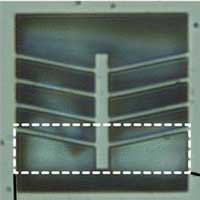|
Nanotechnology News from Nanowerk
&uuid=(email))
 Researchers are exploring the unique information-carrying capacities of DNA, hoping to produce microscopic forms whose ability to encrypt, store and retrieve information rival those of the silicon-based semiconductor memories found in most computers. 
 Researchers report using a combination of ultraviolet and ozone exposure to generate a wettability difference and an applied field to create horizontally aligned polarization of nanotubes on flexible substrates with interlocking electrodes. 
 Researchers report an ultra-small actuator with the fastest on/off switch and most precise position control in the world. 
 Compact linear stages for X, XY, and XYZ and a new miniature rotary stage for high precision positioning in vacuum and high vacuum applications in research and industry. 
 Researchers have developed and patented a new nanomedicine for its diagnosis and treatment (theranostic system), based on the use of organic porous nanoparticles called COFs - covalent organic frameworks - which stand out for being more efficient and less aggressive than conventional chemotherapy. 
Skin-interfaced, wearable electronics have attracted significant attention due to their unique roles in preventative monitoring, diagnostic confirmation, and convenient therapeutic options. The ultimate application of these bio-integrated devices for practical and convenient applications hinges on the seamless integration of on-body sensors with wireless transmission modules. As a promising direction toward this class of integrated systems, soft body area sensor networks include on-body sensors for physiological signal monitoring and flexible printed circuit boards for signal conditioning/readout and wireless transmission. 
 Sub-nanometer particles are very popular because of their diverse applications, but technical difficulties in their synthesis has hindered research in this field. Scientists used an 'atom-hybridization method' to overcome this barrier. 
 By varying the energy and dose of tightly-focused electron beams, researchers have demonstrated the ability to both etch away and deposit high-resolution nanoscale patterns on two-dimensional layers of graphene oxide. 
|
|